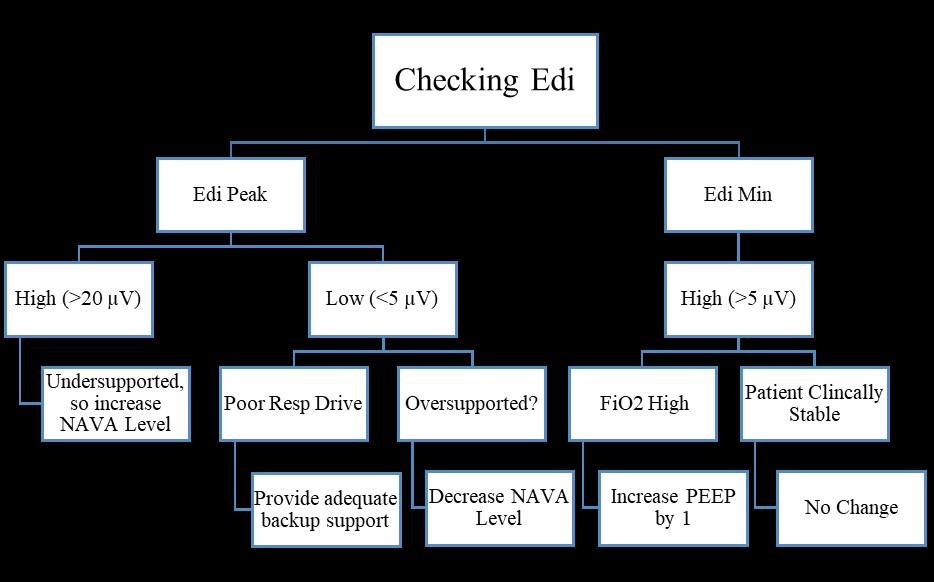[1]
Keszler M. State of the art in conventional mechanical ventilation. Journal of perinatology : official journal of the California Perinatal Association. 2009 Apr:29(4):262-75. doi: 10.1038/jp.2009.11. Epub 2009 Feb 26
[PubMed PMID: 19242486]
[2]
Mellott KG,Grap MJ,Munro CL,Sessler CN,Wetzel PA, Patient-ventilator dyssynchrony: clinical significance and implications for practice. Critical care nurse. 2009 Dec;
[PubMed PMID: 19724065]
[3]
Stein H, Alosh H, Ethington P, White DB. Prospective crossover comparison between NAVA and pressure control ventilation in premature neonates less than 1500 grams. Journal of perinatology : official journal of the California Perinatal Association. 2013 Jun:33(6):452-6. doi: 10.1038/jp.2012.136. Epub 2012 Oct 25
[PubMed PMID: 23100042]
[4]
Sinderby C, Navalesi P, Beck J, Skrobik Y, Comtois N, Friberg S, Gottfried SB, Lindström L. Neural control of mechanical ventilation in respiratory failure. Nature medicine. 1999 Dec:5(12):1433-6
[PubMed PMID: 10581089]
[5]
Lourenço RV, Cherniack NS, Malm JR, Fishman AP. Nervous output from the respiratory center during obstructed breathing. Journal of applied physiology. 1966 Mar:21(2):527-33
[PubMed PMID: 5934459]
[6]
Navalesi P,Costa R, New modes of mechanical ventilation: proportional assist ventilation, neurally adjusted ventilatory assist, and fractal ventilation. Current opinion in critical care. 2003 Feb;
[PubMed PMID: 12548030]
Level 3 (low-level) evidence
[7]
Szczapa T, Beck J, Migdal M, Gadzinowski J. Monitoring diaphragm electrical activity and the detection of congenital central hypoventilation syndrome in a newborn. Journal of perinatology : official journal of the California Perinatal Association. 2013 Nov:33(11):905-7. doi: 10.1038/jp.2013.89. Epub
[PubMed PMID: 24169930]
[8]
Ellett ML, Beckstrand J, Flueckiger J, Perkins SM, Johnson CS. Predicting the insertion distance for placing gastric tubes. Clinical nursing research. 2005 Feb:14(1):11-27; discussion 28-31
[PubMed PMID: 15604226]
[9]
Sindelar R, McKinney RL, Wallström L, Keszler M. Proportional assist and neurally adjusted ventilation: Clinical knowledge and future trials in newborn infants. Pediatric pulmonology. 2021 Jul:56(7):1841-1849. doi: 10.1002/ppul.25354. Epub 2021 Mar 15
[PubMed PMID: 33721418]
[10]
Narchi H, Chedid F. Neurally adjusted ventilator assist in very low birth weight infants: Current status. World journal of methodology. 2015 Jun 26:5(2):62-7. doi: 10.5662/wjm.v5.i2.62. Epub 2015 Jun 26
[PubMed PMID: 26140273]
[11]
Breatnach C, Conlon NP, Stack M, Healy M, O'Hare BP. A prospective crossover comparison of neurally adjusted ventilatory assist and pressure-support ventilation in a pediatric and neonatal intensive care unit population. Pediatric critical care medicine : a journal of the Society of Critical Care Medicine and the World Federation of Pediatric Intensive and Critical Care Societies. 2010 Jan:11(1):7-11. doi: 10.1097/PCC.0b013e3181b0630f. Epub
[PubMed PMID: 19593246]
[12]
Donn SM, Sinha SK. Can mechanical ventilation strategies reduce chronic lung disease? Seminars in neonatology : SN. 2003 Dec:8(6):441-8
[PubMed PMID: 15001116]
[13]
Beck J, Reilly M, Grasselli G, Mirabella L, Slutsky AS, Dunn MS, Sinderby C. Patient-ventilator interaction during neurally adjusted ventilatory assist in low birth weight infants. Pediatric research. 2009 Jun:65(6):663-8. doi: 10.1203/PDR.0b013e31819e72ab. Epub
[PubMed PMID: 19218884]
[14]
Kallio M, Koskela U, Peltoniemi O, Kontiokari T, Pokka T, Suo-Palosaari M, Saarela T. Neurally adjusted ventilatory assist (NAVA) in preterm newborn infants with respiratory distress syndrome-a randomized controlled trial. European journal of pediatrics. 2016 Sep:175(9):1175-1183. doi: 10.1007/s00431-016-2758-y. Epub 2016 Aug 9
[PubMed PMID: 27502948]
Level 1 (high-level) evidence
[15]
McKinney RL, Keszler M, Truog WE, Norberg M, Sindelar R, Wallström L, Schulman B, Gien J, Abman SH, Bronchopulmonary Dysplasia Collaborative. Multicenter Experience with Neurally Adjusted Ventilatory Assist in Infants with Severe Bronchopulmonary Dysplasia. American journal of perinatology. 2021 Aug:38(S 01):e162-e166. doi: 10.1055/s-0040-1708559. Epub 2020 Mar 24
[PubMed PMID: 32208500]
[16]
Makker K, Cortez J, Jha K, Shah S, Nandula P, Lowrie D, Smotherman C, Gautam S, Hudak ML. Comparison of extubation success using noninvasive positive pressure ventilation (NIPPV) versus noninvasive neurally adjusted ventilatory assist (NI-NAVA). Journal of perinatology : official journal of the California Perinatal Association. 2020 Aug:40(8):1202-1210. doi: 10.1038/s41372-019-0578-4. Epub 2020 Jan 7
[PubMed PMID: 31911641]

